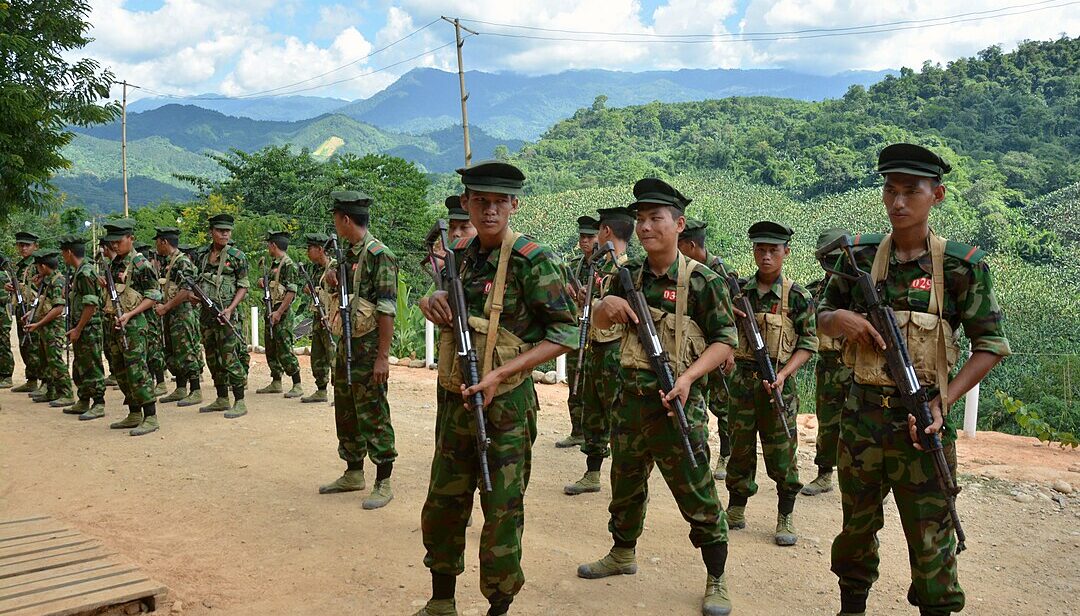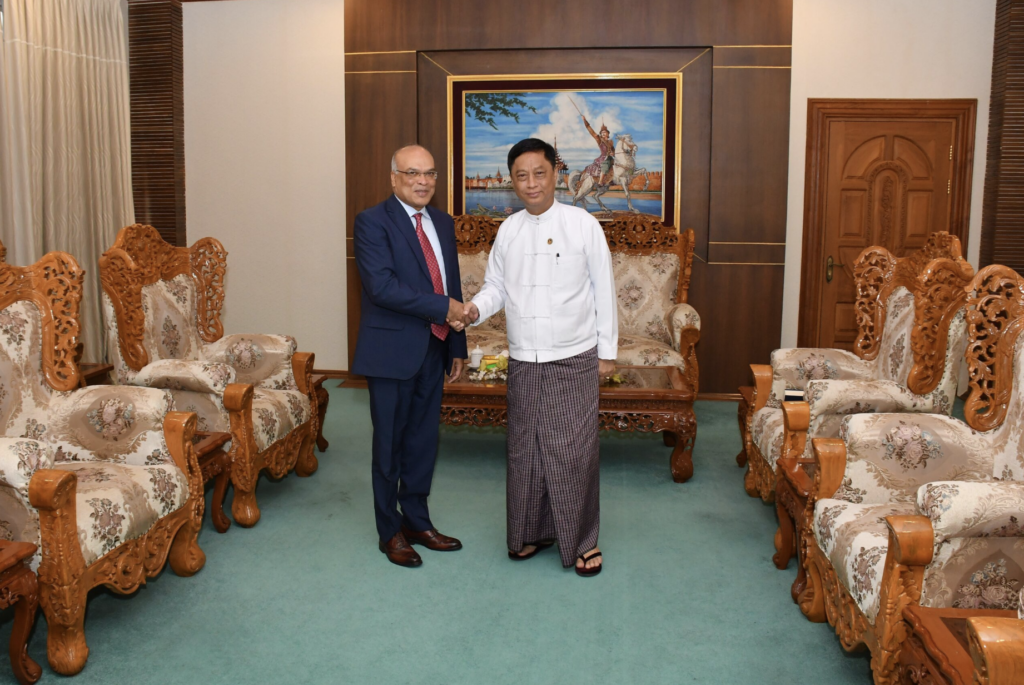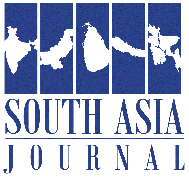
by Angshuman Choudhury
Four years after the military junta in Myanmar seized power in a coup, the country remains locked in a state of relentless armed conflict, political strife, and economic decay. Yet, on a closer look, it seems that a politically sophisticated resistance is unfolding at various levels and scales of society. This resistance, though fragmented on many fronts, is united by the stated goal of building a federal democratic union ruled by an elected civilian government with equal political agency enjoyed by all ethnic communities.
With large stretches of Myanmar’s multiethnic borderlands switching hands from the military regime to armed resistance groups, neighbors India and China have also had to contend with a new reality and reconsider their engagement with both sides. However, despite the credible challenge to the junta by resistance groups and the specter of a more flexible China increasing its influence in the country, India has responded rather guardedly. It has steadfastly maintained a public relationship with the junta — also called the State Administration Council (SAC) — while only covertly and cautiously parlaying with a small group of ethnic armed organizations (EAO). But this policy may not suffice as the junta continues to weaken. In order to protect its interests, India would need to adapt to Myanmar’s changing political geography and diversify its engagement with warring groups in the country.
Myanmar’s Changing Political Geography
Despite the countrywide resistance sparked by the Spring Revolution that followed the coup, the junta had largely maintained the integrity of what is known as the heartland, dominated by the majority Bamar people who constitute almost 70 percent of the total population. This region includes the Dry Zone at the center, which has historically served as the Myanmar military’s key political, cultural, and territorial stronghold. While newly-formed armed resistance groups, known as the Local Defense Forces (LDF) and the People’s Defense Forces (PDF), attracted Bamar fighters across the heartland after the coup, most of the high-intensity warfare was confined to the ethnic minority uplands that surround the Bamar heartland. Even Operation 1027 — the coordinated anti-regime offensive that swept through the north in October 2023 — did not touch the heartland’s core.
However, this cordon sanitaire around the Bamar heartland might now be unravelling. Some EAOs and their co-ethnic PDF allies are now opening new frontlines close to the core areas. The Arakan Army (AA), an ethnic Rakhine EAO that has made dramatic territorial gains in southwestern Myanmar over the last year, has shown the greatest resolve to enter the Bamar heartland by recently attacking several junta positions in the Magway, Bago, and Ayeyarwady regions. These offensives bring the resistance closer to critical military installations feeding the junta’s war machine, such as ordnance factories. But while the rebels are closing in on the heartland, the capture of major cities remains distant.
Beyond these rebel incursions, the junta faces a deeper social, economic, and political crisis in the heartland. First, it is struggling to recruit troops in the majority Bamar areas, as large parts of the population refuse to join its brutal war. As a result, it is having to rely on a conscription program, forcing young adults to join a death march. Many are choosing to instead flee the country.
The future of the Bamar-dominated central regions depends greatly on how the ethnic minority uplands shape the Spring Revolution, rather than the other way around. It is this tectonic shift in Myanmar’s political geography that its neighbors, including India, now have to confront.
Second, as an economic force, the heartland relies heavily on the minority-populated peripheries for trade and infrastructure networks. With most of the official border trade crossings (or overland access to those crossings) now under EAO control, the junta is struggling to maintain its revenue sources. Therefore, while the heartland continues to retain the highest levels of economic, strategic, and administrative infrastructure, it is visibly transforming into an isolated geography of risk, degradation, and despair.
Third, the junta is facing a ground-up challenge to its political legitimacy in the heartland. Over the last two years, rebel groups have worked to develop alternative governance mechanisms in the areas that they have captured. Many of these are run directly by the National Unity Government (NUG) through a three-tier system comprising defense, administrative bodies, and law enforcement arms. While other non-NUG areas have more rudimentary forms of self-governance, together, these autonomous pockets have been able to offer the heartland population an alternative vision of civilian governance, justice delivery, and humanitarian aid.
But since the fiercest resistance to junta rule and the most sophisticated alternative governance systems are seen in the ethnic regions and not the Bamar Dry Zone, the political and military center of gravity of Myanmar has moved from its heartland to its peripheries. In fact, the future of the Bamar-dominated central regions depends greatly on how the ethnic minority uplands shape the Spring Revolution, rather than the other way around. It is this tectonic shift in Myanmar’s political geography that its neighbors, including India, now have to confront.
India’s Continued Engagement With a Weakened Junta
Since the coup, India has maintained and expanded formal relations with the junta, calculating that the SAC is best placed to secure New Delhi’s economic, strategic, and geopolitical interests in Myanmar. But the junta’s military losses have complicated this policy. Since Operation 1027, the AA and a diverse coalition of armed Chin groups — including the influential Chin National Front/Army (CNF/A) — have swiftly captured vast swathes of the northern Rakhine and western Chin states, which border India. They have even captured official and unofficial border crossings. In fact, these groups now dominate nearly all of the remote frontier through which New Delhi’s expensive cross-border connectivity endeavor — the Kaladan Multi Modal Transit and Transport Project (KMMTTP) — runs.

This striking territorial inversion has forced New Delhi to look beyond the junta, even as the EAOs hope to secure critical support from India. In recent times, India has discreetly initiated contact with resistance groups in neighboring Chin and Rakhine states, albeit cautiously, perhaps because of the complicated history of stunted collaborations and betrayals that color its relationship with them. Last year, the Indian government issued an unprecedented invite to the NUG and EAOs from the Chin, Rakhine, and Kachin states to attend a closed-door seminar in New Delhi.
However, this outreach was soon complicated by China’s growing influence over the junta. In the months leading up to the seminar, Beijing had switched gears to reinforce the junta after it deemed that two northern EAOs — whom it had earlier backed — had violated a China-sponsored ceasefire and were close to toppling the junta. On the same day as the planned seminar in New Delhi, China welcomed the SAC chief, Min Aung Hlaing, to Beijing for his first trip to the country since the coup. In response, India quickly reinforced its own ties with the junta. The seminar in New Delhi, to which India had originally invited EAOs and the NUG, was later attended instead by a junta-led delegation, suggesting perhaps that the invites to the rebel groups were quietly withdrawn. Separately, India’s ambassador in Yangon, Abhay Thakur, held several meetings with senior SAC officials, potentially with the aim of securing an official India visit for Hlaing. The Indian military has also welcomed SAC contingents for training.
This flip-flop in New Delhi’s approach to EAOs and these public engagements with the junta seem to be designed to indicate to Beijing that it has competition in influence in the country. In that same spirit, in January, the Indian Embassy in Myanmar put out a press release that referred to the Kaladan project as a “corridor” for the first time, seemingly to compete with the China Myanmar Economic Corridor (CMEC).
Can India Mediate?
New Delhi may be unwilling to pivot away from the junta despite its dramatic losses in the battlefield due to four possible factors: one, it may not yet be convinced that the resistance can defeat the junta comprehensively across all fronts, despite all its gains; two, India does not have a history of engaging formally or diplomatically with non-state armed groups on a government-to-government level until they are in control of the federal administrative apparatus in the national capital; three, in the absence of a prominent figure like Aung San Suu Kyi amid the presence of multiple influential groups, New Delhi remains unsure about whom to talk to within the resistance; and four, parts of the Indian establishment likely see EAOs in Myanmar as having separatist ambitions — an outcome of its own anxieties with ethnic armed movements in Northeast India. The fact that some of these EAOs operate close to the porous northeastern border have only compounded India’s concerns.
As the largest federal democracy in the region, India has the normative standing to support a genuine federal democracy in Myanmar […] To these ends, India must show commitment toward diversifying its relationships with the prime movers of the Spring Revolution.
Nonetheless, New Delhi has to realize that times have changed. The military regime has not sunk yet, but it may not remain afloat for long. Even a ceasefire with a powerful EAO in the north has so far failed to revert lost territory and assets to the regime. Struggling to reclaim ground, the junta has instead relied on airstrikes, drones, cheap paramotors, and a motley band of violent militias, consequently inflicting indiscriminate violence on civilians. Under such circumstances, the junta appears to be in no position to secure India’s long-term interests in Myanmar. New Delhi should now try a different tack.
As the largest federal democracy in the region, India has the normative standing to support a genuine federal democracy in Myanmar. New Delhi also has the opportunity to offer a credible alternative to Beijing’s relatively more coercive style of conflict mediation in Myanmar. To these ends, India must show commitment toward diversifying its relationships with the prime movers of the Spring Revolution. One way to do this would be to talk to them behind closed doors and engage in targeted conflict mediation that secures its own interests along the border while also benefiting local communities. Such moves come with high risks. Recently, the Mizoram chief minister brokered a peace deal between warring factions in Chin state, provoking a sharp response from the junta. Nonetheless, discreetly aiding political cohesion among non-SAC forces along the border may favor Indian interests in the short and medium terms. Additionally, India should use its relationship with these groups to dispatch humanitarian aid to conflict-affected and displaced border communities.
India regularly claims to stand with the people of Myanmar. Now, it should walk the talk.
The article appeared in the southasianvoices
